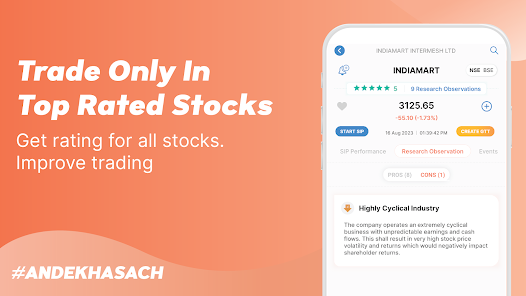Exchange Traded Funds (ETF) have become an important part of many investors’ portfolios, enabling access to a diverse range of asset classes while incurring reduced costs and improving transaction execution. In this post, we’ll go over six things you should know about ETFs, as well as clear up some myths and misconceptions regarding them, to help you make educated financial decisions.

Things to know for investing in ETFs:
One prevalent misperception regarding ETFs is that they are completely passive and cannot outperform actively managed funds or equities. While many ETFs monitor market indexes and provide lower fees than actively managed funds, certain ETFs are actively managed and can provide significant outperformance.
The problem is accomplishing this consistently over time. SPIVA (S&P Index vs. Active) research has found that the majority of active managers outperform their benchmark over both short and long time periods. Considering the risk factor, ETFs are risky compared to an IPO.
Risks related to ETF:
- Magnified risk: Leveraged ETFs may compound both losses and returns. If the underlying assets lose value, the leveraged ETF’s value may fall even more, possibly causing huge losses for investors.
- Liquidity risk: Some leveraged ETFs may have lower trading volume and liquidity than other ETFs, making it harder for investors to acquire and sell shares at reasonable prices.
- Volatility risk: Because leveraged ETFs are designed to increase daily gains, they may be more volatile than non-leveraged ETFs. This can make them more vulnerable to short-term market fluctuations, and they may underperform over longer periods. There are low-volatility ETFs that can help reduce risks.
- Interest rates: Leveraged ETFs may be subject to interest rate risk since they frequently employ borrowed money to create leverage. If interest rates rise, the cost of borrowing may rise, reducing the ETF’s performance.
- Tracking risks: Leveraged ETFs may not always track the underlying assets they are intended to monitor as predicted owing to variables such as market volatility and tracking inaccuracy. This might lead to lesser returns than intended.
Investors should be careful of the ETF’s expenses since greater fees might reduce long-term gains. One of the primary advantages of ETFs is that they have cheaper costs than mutual funds.
The cost of an ETF varies greatly based on the assets held in the fund and the expense ratio paid by the fund’s administration. Expense ratios for ETFs are often lower than those of actively managed mutual funds, ranging from less than 0.10% to over 1%.
Whether you are an active or day trader, long or short-term investor. ETFs may be a compelling investment alternative for a wide range of individuals, regardless of their investing objectives, risk tolerance, or degree of expertise. ETFs provide investors with the benefits of affordability and diversity. If you want to start investing in an ETF, you can open a free Demat Account.
ETFs also allow investors to trade throughout the day, allowing them to easily respond to market fluctuations and adapt their portfolios as required. They are an excellent tool for investors to better understand their assets since they provide total transparency about holdings and disclose the whole portfolio on a regular basis.
No Responses